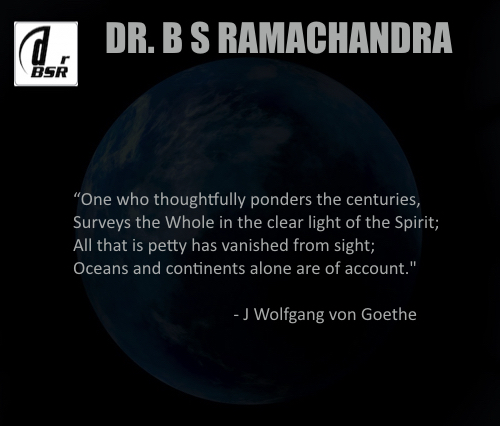Spontaneous Self-Organization

The underlying theme of this website is that learning is a process of self-organization that is generally spontaneous when a conducive environment prevails. Preserving the spontaneity, whether by creating conditions for a conducive environment or by making the learning itself robust under diverse environmental conditions, is of utmost importance. It is necessary, therefore, to outline the meaning of self-organization. In our experience, self-organization resolves itself into three kinds, - spontaneous self-organization, stimulated self-organization and inhibited self-organization.
Leonardo: Da Vinci, since our main theme is that learning is a process of self-organization, why don't you outline what it is so that we can grasp how it happens.
Da Vinci: Sure, Leonardo. I will begin by drawing attention to a crucial observation in systems thinking regarding the mind. Formerly, the mind was thought of in terms of a static concept. After the formulation of systems thinking, it began to be regarded as a process. The focus shifted, therefore on "mental processes." The foremost among the systems thinkers was Gregory Bateson who laid out a set of properties for systems to have before mental processes like memory, learning, decision making, volition, could occur. These were implicit before even the development of nervous systems. This definition made it possible for him to associate mind with not only living organisms but also social systems and ecosystems, no doubt a radical view especially during the times in which he lived. And the reason it is so significant to understand what the mind is from the point of view of a process, is that this gives us leverage in understanding the process of learning. The conventional view of mind is static as that regards the mind as a thing and is, therefore, insufficient to provide a framework for learning.
Leonardo: Wow, Da Vinci, that's really a broad view of the mind!
Da Vinci: Yes, Leonardo. Bateson set forth six criterion for any system to be called a mind.
1) A mind is an aggregate of interacting parts or components.
For us, this essentially means that the necessary condition for a mind to emerge is that the nervous system of an organism is sufficiently complex. A single entity without any composite parts cannot be ascribed a mind.
In the context of learning it implies that the student learner should have a sufficiently complex development of the nervous system. Fortunately, this is almost guaranteed from birth to the first few years of life during which the nervous system develops with great rapidity. So what this can really be taken as is that the subject matter presented to the learner should be sufficiently complex to match the complexity of the learner. The presentation ought to have sufficient complexity. Otherwise boredom shuts off the perceptive faculties due to monotony.
2) The interaction between parts of mind is triggered by difference, and difference is a nonsubstantial phenomenon not located in space or time; difference is related to negentropy and entropy rather than to energy.
For us, this means that the mind can only perceive and operate with changes. The unchanging is imperceptible by the mind and the only way to perceive it is by changing the mind itself relative to it. Again, this implies that monotony in the presentation of subject matter goes over the student and is not registered by the mind. Boredom then is simply a safety device by which the mind shuts off an unappealing changeless stimuli. Even when we see a static object, we are able to perceive it because the eyes provide the change as the eyeballs fluctuate continuously, a process known as micronystagmus or in more modern terms, saccades. The eyes jump to and fro from a given point to another and back again at a frequency of three times per second. So three times in a second the brain perceives a different image of the "same" object.
3) Mental process requires collateral energy.
Let us look at this in the context of learning. In any mental process there are two kinds of energy involved. The first is that of starting, triggering or awakening the process of learning and the second that of sustaining the process and seeing it through to completion. The main function of the teacher lies in making the first happen. Once that is done, the second happens by virtue of two factors, one due to the neuroplastic BDNF or Brain Derived Neurotropic Factor that supplies an intense burst of energy, the energy of novelty of the Beginner's Brain, and two, due to the free energy of spontaneous self-organization that is essentially a balance of the psychic energy and psychic entropy. Most often the mistake in teaching is precisely this: the teacher leaves the task of providing the first kind of energy to the student and relentlessly labours to force the second kind of energy by the process of teaching. The tremendous energy of the BDNF and spontaneous self-organization is thereby ignored, inhibited, distorted and destroyed in this process.
4) Mental process requires circular (or more complex) chains of determination.
During Gregory Bateson's time, this could be taken as a cybernetic feedback. However, recent work as mentioned in Stuart A Kauffman's beautiful book, "World Beyond Physics (2019)," draws attention to the pathbreaking work of Maël Montévil, Matteo Mossio in their paper, "Biological Organization as Closure of Constraints (2015)." Following on this lead, Kauffman introduces three closures necessary to define life processes. And since we have already taken the autopoietic hypothesis that links life and cognition we may extend these closures to mental processes and hence the process of learning that we are concerned with. According to Kauffman, constraint closure means that "the same system does work to construct the very same set of constraints needed to obtain work at all." Then there is the work-task closure. This means that the work tasks are performed in a cycle. This makes it possible for a given system to construct itself. Lastly, there is catalytic closure. This means that all the catalysts needed to make the same set of catalysts are contained in the autocatalytic set itself. "The system literally constructs itself." For the process of learning these closures allow the learning to transit beyond a linear learning phase into a generative learning phase in which, all the three - form and structure, work and energy, feedback and control are built into the phase. Linear learning fails to incorporate even a single one of these. The three closures, moreover, correspond well with the learning described in the framework of the Fifth Discipline. Another circular causation also involved is the cognitive cycle of creativity - conscious preparation, subconscious incubation, subliminal illumination, conscious verification.
5) In mental process, the effects of difference are to be regarded as transforms (i.e., coded versions) of events which preceded them. The rules of such, transformation must be comparatively stable (i.e., more stable than the content) but are themselves subject to transformation.
6) The description and classification of these processes of transformation disclose a hierarchy of logical types immanent in the phenomena.
Bateson argued that the phenomenon of thought, evolution, ecology, life, learning occurred only in systems that satisfy these criteria. And, Leonardo, each of these criterion are quite profound in their implications and needs must be looked into in depth.
Leonardo: To grasp learning as self-organization, Da Vinci?
Da Vinci: To grasp learning as cognitive self-organization, Leonardo. For, though self-organization in nature is quite well discussed, self-organization in cognition is not so. That explains the prevailing static idea of learning, - as a thing rather than a process - that most educational systems base themselves on.
Leonardo: Consequently, these educational systems consider the student also as a thing and not as a conscious individual endowed with a mind of immense complexity, in fact, a complex adaptive system.
Da Vinci: And that is why they focus on simply giving lectures passing on information to the student and perhaps accompanied by training in the techniques of problem solving.
Leonardo: What is the central principle of the "mind as a process," approach?
Da Vinci: A crucial insight is that cognition, the process of knowing is identified with evolution, the process of life. Cognition, therefore is treated as the very process of life. Mental activity is identified as the organizing principle at all levels of life. Cognitive interactions are now treated as the basis of interaction of a living organism with its environment. The necessity of the brain as the basis of the mind is completely relaxed.
Leonardo: How then does the brain enter into the picture?
Da Vinci: Only when needed, Leonardo. And when the brain is brought into the context it is known as embodied cognition. It has to do with organisms with a brain and nervous systems manifesting mind. Otherwise, mind need not have anything to do with the brain. This resolves the age-long cartesian split of the body and mind.
Leonardo: So cognition is the process of life!
Da Vinci: Yes, the entire process of life. This radical view is known as the Santiago theory as proposed and developed by Francisco J Varela and Humberto R Maturana. Theis theory is closely related to autopoiesis, the auto-catalytic self-generation of living networks.
![[Improvision Data]ImageName=TimeStampMicroSeconds=3310042782695000TimeStamp=17:19:42.695 on 20 Nov 2008ChannelName=ChannelNo=1TimepointName=1TimepointNo=1ZPlane=1BlackPoint=0WhitePoint=255WhiteColour=255,255,255XCalibrationMicrons=1YCalibrationMicrons=1ZCalibrationMicrons=1TotalChannels=1TotalTimepoints=1TotalZPlanes=1Software=Volocity 4.2.1 Build 102SampleUUID=9c24dccf-98c9-4175-a67f-41c22887b783](/images/3D-SIM-4_Anaphase_3_color.jpg?1689279104753)
Leonardo: By autocatalytic I understand that a substance that emerges in the process further aids the process and sustains it to remain self-perpetuating.
Da Vinci: That's right, Leonardo. This self-generation is characteristic of autopoiesis. An autopoietic system undergoes continual structural changes while preserving its organizational network. One of these is self-renewal. Living organisms continually renew themselves just as neural networks do. And this is one of the factors that enables us to identify cognition and evolution, that is mental processes and life.
Leonardo: Da Vinci, this seems to match the process of learning in that every interaction the student has with the environment results in structural changes in the neural networks and this naturally increases the complexity, I think, ordered complexity, when the learning results in a desired outcome.
Da Vinci: In fact, every perception results in structural changes, Leonardo. That is why a living organism is also a structurally coupled system. Structural coupling is characteristic of living systems and this is a key distinction between living and non-living systems. A continual change in structure forms and defines its own unique structural coupling. This is the real meaning of growth for a living organism. Since a living organism is so defined by its structure and structural coupling it is known as structure-determined.
Leonardo: Da Vinci, this means that the process of learning is also structure-determined in the sense that once a certain initial structure is initiated in the learning, it has a natural tendency to self-perpetuate by autopoietic processes. And there is no need of any external stimulation from the environment unless that can aid the process or bring a new turn to it.
Da Vinci: Yes, Leonardo. And that is why, the mentor, after having initiated the student into the learning needs to step aside and let the learning process take over autopoietically or autocatalytically. By this continual accumulation of autopoietic processes, the linear growth can eventually take on the touch of the exponential and begin to accelerate itself.
Leonardo: Ah, therefore, not to interfere with the natural autopoietic process requires great wisdom on the part of the mentor!
Da Vinci: Especially in not imposing the mentor's will on the student, Leonardo. Because, the autopoietic process also brings in an intrinsic free-will into the student. In autopoiesis, the living system is deterministic but that determinism comes from within. So both free-will and determinism coexist. This means also that it is futile to try to direct the student's learning for that direction ought to emerge from the student's own structural-determinism. The mentor can only aid in this emergence. As Maturana says, one cannot direct an autopoietic system but only disturb it.
Leonardo: So, in lectures, the teacher is actually continually disturbing the students and not directing them as is usually thought!
Da Vinci: Yes, disturbing the process of learning. And that is why in general, teaching inhibits learning. And since the student has both free-will and determinism, it is the student who decides what inputs from the teacher aid and what disturb the learning. As you see, conventional teaching fails miserably in this as there is no scope for the student to exercise free-will and is artificially subject to a rigid determinism by the teacher's will, the classroom constraints, the syllabus and curriculum.
Leonardo: Da Vinci, teaching inhibits learning also because it interferes with the autotelic nature of optimal experience isn't it?
Da Vinci: You mean, the flow experience, Leonardo? Yes, teaching interferes with flow by inhibiting the autotelic nature. In a flow experience, as you know, the self sinks below the threshold of conscious awareness. The actions become autotelic, that is, spontaneous and automatic, without the necessity of conscious processes as it were, though unconscious processes continue throughout thereby supporting the action. Teaching is most often directed to the conscious mind and requires the self to be present. Thus, it forces the self to arise from its abeyance. Naturally, the autotelic nature is disturbed and possibly destroyed.
Leonardo: Then, is there any way in which teaching can be done unconsciously, without disturbing the autotelic nature?
Da Vinci: Of course, but that is a subtle process and needs an equally subtle use of language such that it begins to resonate with the unconscious processes thereby aiding them. This is more like what happens in a hypnotic trance though it is not necessary to induce hypnosis and can be done in a conversational manner. Great teachers have this as an unconscious competence and that is why the listeners often come away with a talk or lecture by such teachers wondering what it was that they really learned. The learning does happen but in such a manner that one is not aware of it. So also, books written by great masters have this quality. One reads them and gets enraptured by the flow of the writing into a state of heightened awareness and thinking and the learning happens spontaneously.
Leonardo: Da Vinci, I do get what you are saying. Nevertheless, as this is so significant I would like you to elaborate it a little more.
Da Vinci: Let me elaborate on why and how teaching can interfere with learning. To truly learn effectively, it is necessary that the student gets into flow as quickly as possible and remain in it throughout the duration of the process. For this, the focussing and heightening of attention is absolutely crucial and important. I will contrast two situations, one when the student is learning from a book and another when listening to a lecture.
1) First, the student is learning from a book. He begins by browsing it and getting familiar with the content and then beginning to read it. Here again there are two possibilities,
i) the student is using an auditory mode. In this case, it is not much different from that of listening to a lecture because if the student is using an auditory mode, the student has an internal voice going on in his mind before the content gets translated into the learning. There is just one advantage, in using the auditory mode while reading a book, the student has control over which parts to skip whereas in a lecture that is rarely possible. So reading a book, even in an auditory mode is faster than while listening to a lecture.
ii) the student is using a visual mode. In this case the student can focus attention on those parts of the book that are really necessary and skip the rest. Moreover, as the student begins to get into flow, he can experience the optimal state wherein the self, time and environment disappear from the threshold of consciousness. So the flow practically remains undisturbed as long as the student chooses to be involved in the reading. And since there is no external disturbance, this process is stable.
2) Second, the student is listening to a lecture. Obviously, then, that student is forced to use the auditory mode. Even if the teacher is writing on the board, the writing itself is dominated by the speech so the auditory mode prevails throughout the lecture. And the student is limited by the speed of the teacher. Moreover, the self of the teacher being active, is a potential disturbance to the self of the student. As a result the student can rarely slip below the threshold of consciousness by forgetting the self. The time is controlled by the teacher and the environment is constrained by the presence of other students. All these inhibit the onset of flow.
So, Leonardo, you can see how the very presence of the teacher inhibits learning by preventing flow. Now, there are apparent exceptions to this. Take the case of the great French mathematician Henri Poincare. While attending lectures he usually closed his eyes and listened. He used a predominantly auditory mode. But this in no way limited his speed of learning because he was himself an incredibly fast learner and moreover a thinker of the listed order. He thought much, much faster than the teacher could ever imagine. So he was actually an exception. He merely listened to the teacher to catch some information and then went on to make his own discoveries and reach his own conclusions.
Leonardo: Da Vinci, in all that you are speaking about, one thing strikes me as crucial though understated in general and that is that the presence of the self inhibits learning and its absence enhances it. I mean, when the self is above the threshold of conscious awareness it diminishes learning and when it is below consciousness awareness it enhances learning. Could you go into this a little more?
Da Vinci: Of course, Leonardo. Now, what really is the self phenomenologically? Not metaphysically or philosophically for, that would involves us in endless chain of reasoning and discussion without any conclusive result. For practical purposes, let’s take the self or ego to be like a master program among all other programs running in the brain-mind. It is the condensate or residue of all experiences. It draws upon all experiences for its existence and in turn influences them in a non-linear manner. Now, as this is a master program it is, in the language of complexity theory, a dissipative structure in the sense that it requires psychic energy to maintain itself and in doing so it dissipates energy. When is it most active? Obviously when it is on threat or in a stress mode. But in absence of any threat or stress, it can safely sink below the threshold of conscious awareness. And when it does so all the psychic energy can flow towards the task at hand. Conversely, when all the psychic energy flows as demanded by the task at hand, the self or ego sinks below the threshold of conscious awareness. Do you get this?
Leonardo: Yes, when the self is present, the psychic energy is distributed, a major portion of it to maintain the self and the remaining towards the task at hand. Of course, there could be energy used up by other processes in the organism but for the moment I am leaving that out. So, for all the energy to be deployed towards the task at hand, the self needs to be absent, that is to sink below the threshold of conscious awareness. But I have a question regarding the converse.
Da Vinci: yes, go ahead, Leonardo.
Leonardo: If the self sinks below conscious awareness, does it necessarily follow that all the energy flows towards the task at hand? Doesn’t that depend to a great extent on the nature of the task also?
Da Vinci: Of course, Leonardo. You are perfectly right in pointing this out. Absence of the self is necessary but not sufficient for the energy to flow towards the task at hand. For the energy could be used up by other demands than by the task at hand. Such is the case when there is passive flow, that is, when the challenges and skills are low. Then, though the self sinks below conscious awareness, the energy does not flow as there is really no task at hand. A necessary and sufficient condition, therefore, for psychic energy to flow towards the task at hand is that the self should sink below the threshold of conscious awareness and that the challenges and skills are above a certain minimum level.
Leonardo: Da Vinci, an insight seems to be emerging in me. It is like this. As flow ensues when the challenges and skills are sufficiently high…and as in flow…the self is absent, that is, sinks below the threshold of conscious awareness…if there is a sudden encounter with such a challenge, there is an immediate state of flow…and in that state of flow, there is no self and hence, no naming…all the energy is taken up in meeting that challenge. And one such challenge is the perception of something that is majestic, beautiful, wonderful, awesome…
Da Vinci: Go on, Leonardo.
Leonardo: When one is confronted with something that requires complete attention, in that encounter, there is no self present and hence no naming. And conversely, when there is naming, there is no complete attention.

Da Vinci: Ah, Leonardo, you are perfectly right. In fact, the great Indian seer and teacher, J Krishnamurti speaks of precisely this when he talks about choiceness awareness leading to a complete perception. That the observer disappears in a complete perception and hence, the observer is the observed. So you see, how in teaching, the very presence of the teacher acts as an interruption to the perception and thereby inhibits the learning. Learning best happens when there is no teacher and the learner is teaching oneself.
Leonardo: Da Vinci: I couldn’t help catch the phrase, “Learning best happens when there is no teacher and the learner is teaching oneself.” As you already mentioned, teaching aids learning only when the teacher is teaching to learn. So, when the learner is teaching oneself, teaching aids the learning quite powerfully!

Da Vinci: Exactly, Leonardo! This is where the role of teaching really becomes significant and efficacious. You see, Leonardo, teaching is a very powerful action. But it is effective when used in the right context. And this right context is when the learner is also the teacher and teaches oneself. In all other situations when the learner and the teacher are different, teaching is quite naturally, limited.
Leonardo: There, then is really no context wherein an external teacher is really effective?
Da Vinci; Except to the extent that the external teacher evokes the process of learning in the learner and then steps aside to let the learning happen by itself, spontaneously. And it is no easy matter for the teacher and requires great wisdom on the part of the teacher to know how and when to step aside, hand over the process of learning to the learner and leave the learner to his own resources.
Leonardo: This reminds me of what Richard Feynman says that the best teacher is one who makes himself redundant in the shortest possible time.
Da Vinci: Yes, now that you mention Feynman, the great theoretical physicist Julian Schwinger, who was Feynman’s contemporary and also shared the Nobel prize with Feynman and Tomonaga, was a phenomenal teacher. As a Ph. D thesis advisor, he happened to meet a particular student just a single time in his whole doctoral period. And that was sufficient for that student to do excellent work and go on to eventually become an excellent theoretical physicist himself.
Leonardo: So, Schwinger’s evocative power was very high!
Da Vinci: Yes, his lectures were masterpieces of presentation and put the listeners into a trance-like state in which they absorbed all that he spoke, for the most part, unconsciously though their conscious mind was quite baffled most of the time. It was only when they went back after the lecture and tried to put together all that he had presented that they realised that there were so many missing pieces in the lecture that they did not understand. And trying to figure out those missing pieces led them to a profounder understanding than would have been if they had understood everything consciously. And of course, in the case of Schwinger, the lectures were packed with information that was not to be had anywhere else, and discoveries that he made right in the lectures that he also presented to them then and there. So his lectures were knowledgeable, informative and evocative at the same time.
Leonardo: The best teacher, therefore, teaches more by example and influence than by instruction.
Da Vinci: Yes, paradoxically, the best teacher teaches without teaching.
Leonardo: Ah, so learning by spontaneous self-organization is autocatalytic, autopoietic, and autotelic! What a combination! No wonder it eludes conventional education!
Da Vinci: There is another distinction to know, Leonardo. And that is, about the edge of chaos!
Leonardo: The edge of chaos, Da Vinci? Isn't that have to do with complexity and order?

Da Vinci: That is so, Leonardo. Now, the ordered complexity necessary for cognitive spontaneous self-organization is of a special type. It is a subtle balance of order and chaos and, therefore, rightly described as existing at the edge of chaos. This special condition is known as the Adjacent Possible, a term introduced by Stuart A Kauffman. The Adjacent Possible is an even more finer equilibrium than what autocatalytic, autopieotic and autotelic processes support. It allows for all possible combinations of order but eventually chooses only a few of them. And this choice is perhaps inherent in the adjacent possible. That is perhaps why Henri Poincare makes the beautiful statement, "invention is choice."
Leonardo: Da Vinci, I think one of the ways by which mathematicians and physicists makes this choice is beauty. I recall what Hermann Weyl says, “my work has always been to unite the true with the beautiful. But when I had to choose one over the other, I usually chose the beautiful.”
Da Vinci: Ah, Leonardo, you are right in that observation. Beauty seems to be such a choice. Remember, Dirac saying a very similar thing, that one must look for those equations that have beauty in them. Now, beauty has no clear objective meaning. After all there is the well known statement that beauty is in the eye of the beholder. Hence, a subjective criterion like beauty could often be an aid in making the choice.
Leonardo: Da Vinci, could beauty not be made somewhat objective by looking into the process of perception? As William Blake says, “when the doors of perception are cleansed, everything appears as it really is, infinite.”
Da Vinci: You mean, Leonardo that when a certain degree of purity is attained, the perception of beauty becomes keener?
Leonardo: Exactly, Da Vinci: If you recall what Poincare says, “I mean that profounder beauty that comes from the harmonious order of the parts and which a pure intelligence can grasp…”
Da Vinci: Leonardo, that’s a terrific insight. You have made a beautiful connection. Yes, it does seem to be like that. What Poincare could be meaning by pure intelligence need not be a mere accidental thing. What if it were possible to so tune or refine the senses or cleanse them, as Blake says, that they become pure channels for perception, conveying information from the objects to the brain without any obstruction. And then, such sense perception could bring about a perception of sheer beauty, though as to how that could be compared across different individuals would still be a matter of cleansing of the senses, a kind of catharsis. If you have read the Gita, there is the phrase, kevalair indriyais' caran, a Sanskrit non-translatable nevertheless loosely translated as “mere sense-action”. I think that is an example of this kind.
Leonardo: Coming back to the adjacent possible that you mentioned, in what manner is this adjacent possible so significant, Da Vinci?
Da Vinci: Leonardo, the adjacent possible leads to an increasing evolution of ordered complexity. It is as if the order of the ordered complexity itself increases! So the space of the adjacent possible is ever expanding itself by itself.
Leonardo: Ah, that means, learning when initiated in the true spirit as a autocatalytic, autopoietic and autotelic process grows and expands itself by its own current! And this current builds up to an ever increasing exponential growth!
Da Vinci: Exactly, Leonardo, provided the current of learning is not inhibited by any factors alien to the autocatalytic, autopoietic and autotelic nature supporting the adjacent possible.
I now need to talk about two “critical phenomena,” that I think take place in the process of spontaneous self-organization, phenomena that I would like to call first order and second order “phase transitions,” like in statistical physics. This idea suggested itself to me from Tony Hsieh while reading his book, “Delivering Happiness.”
Leonardo: That sounds really interesting, Da Vinci.
Da Vinci: Yes, Leonardo. I think I will introduce them here and leave more detailed analysis for a later period.
Leonardo: Sure, Da Vinci. So what are these phase transitions you want to talk about?
Da Vinci: Leonardo, like in statistical physics, self-organization in the the brain-mind proceeds in three zones, the first or ordinary zone is that of what I call “the stimulus zone or the pain-pleasure.” This is the zone that the ordinary or majority of people live and work in. They are motivated by the need to avoid pain and to seek pleasure. Happiness they think is in the pursuit of pleasure though they do realise that mere pleasure does not give them the happiness they want. In fact, happiness forever eludes them as it cannot arise from the pursuit of pleasure since its beginnings are to be found only when there is the capacity for optimal experience or flow. As you can see, the majority of people belong to this category and make the pursuit of what they think is happiness, their overarching goal.

Leonardo: The ordinary zone, I think it is also the ordinary world, Da Vinci, like in the archetypal Hero’s Journey.
Da Vinci: Ah, Leonardo, that’s another beautiful connection you made. Yes, I think that’s a good one. So, there is this ordinary zone with a certain level of ordered complexity. And then, as the ordered complexity increases, there comes about a first order phase transition, onto the next zone, the flow zone, the zone of optimal experience.
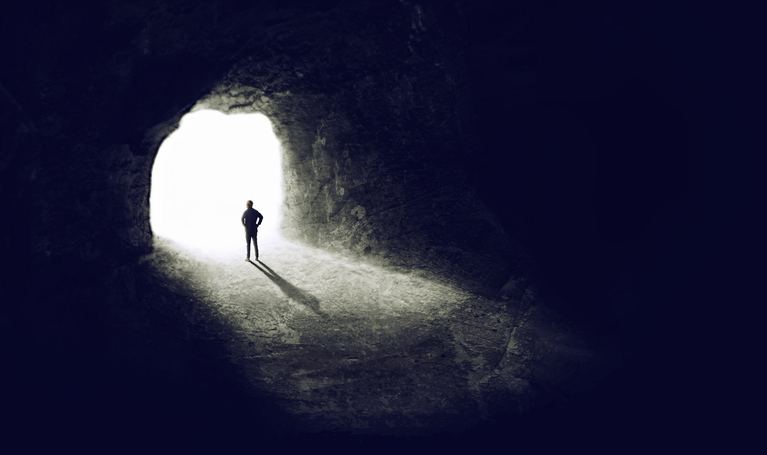
Spontaneous Self-Organization
“The past three centuries of science have been predominantly reductionist, attempting to break complex systems into simple parts, and those parts, in turn, into simpler parts. The reductionist program has been spectacularly successful, and will continue to be so. But it has often left a vacuum: How do we use the information gleaned about the parts to build up a theory of the whole? The deep difficulty here lies in the fact that the complex whole may exhibit properties that are not readily explained by understanding the parts. The complex whole, in a completely nonmystical sense, can often exhibit collective properties, “emergent” features that are lawful in their own right."
"...the emerging sciences of complexity begin to suggest that the order is not all accidental, that vast veins of spontaneous order lie at hand. Laws of complexity spontaneously generate much of the order of the natural world. It is only then that selection comes into play, further molding and refining. Such veins of spontaneous order have not been entirely unknown, yet they are just beginning to emerge as powerful new clues to the origins and evolution of life. We have all known that simple physical systems exhibit spontaneous order: an oil droplet in water forms a sphere; snowflakes exhibit their evanescent sixfold symmetry. What is new is that the range of spontaneous order is enormously greater than we have supposed. Profound order is being discovered in large, complex, and apparently random systems. I believe that this emergent order underlies not only the origin of life itself, but much of the order seen in organisms today. So, too, do many of my colleagues, who are starting to find overlapping evidence of such emergent order in all different kinds of complex systems...
...The existence of spontaneous order is a stunning challenge to our settled ideas in biology since Darwin. Most biologists have believed for over a century that selection is the sole source of order in biology, that selection alone is the "tinkerer" that crafts the forms. But if the forms selection chooses among were generated by laws of complexity, then selection has always had a handmaiden. It is not, after all, the sole source of order, and organisms are not just tinkered-together contraptions, but expressions of deeper natural laws. If all this is true, what a revision of the Darwinian worldview will lie before us! Not we the accidental, but we the expected...
...Life and its evolution have always depended on the mutual embrace of spontaneous order and selection's crafting of that order. We need to paint a new picture." - Stuart A. Kauffman
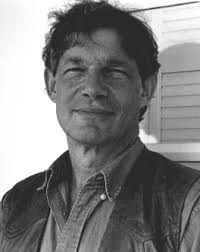
"The child who is "free to move about," and who perfects himself by so doing, is he who has an "intelligent object" in his movements; the child who is free to develop his inner personality, who perseveres in a task for a considerable time, and organizes himself upon such a fundamental phenomenon, is sustained and guided by an intelligent purpose. Without this his persistence in work, his inner formation, and his progress would not be possible. When we refrain from guiding the subjugated child step by step, when, liberating the child from our personal influence, we place him in an environment suited to him and in contact with the means of development, we leave him confidently to "his own intelligence."
"His motor activity will then direct itself to definite actions: he will wash his hands and face, sweep the room, dust the furniture, change his clothes, spread the rugs, lay the table, cultivate plants, and take care of animals. He will choose the tasks conducive to his development and persist in them, attracted and guided by his interest towards a sensory material which leads him to distinguish one thing from another, to select, to reason, to correct himself; and the acquirements thus made are not only "a cause of internal growth" but a strong propulsive force to further progress. Thus, passing from simple objects to objects of ever increasing complexity, he becomes possessed of a culture; moreover, he organizes his character by means of the internal order which forms itself within him, and by the skill which he acquires."
- Maria Montessori
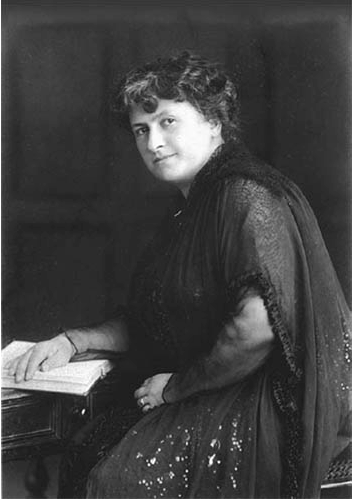
"The key element of an optimal experience is that it is an end in itself. Even if initially undertaken for other reasons, the activity that consumes us becomes intrinsically rewarding. Surgeons speak of their work: “It is so enjoyable that I would do it even if I didn’t have to.” Sailors say: “I am spending a lot of money and time on this boat, but it is worth it—nothing quite compares with the feeling I get when I am out sailing.”
The term “autotelic” derives from two Greek words, auto meaning self, and telos meaning goal. It refers to a self-contained activity, one that is done not with the expectation of some future benefit, but simply because the doing itself is the reward. Playing the stock market in order to make money is not an autotelic experience; but playing it in order to prove one’s skill at foretelling future trends is—even though the outcome in terms of dollars and cents is exactly the same.
Teaching children in order to turn them into good citizens is not autotelic, whereas teaching them because one enjoys interacting with children is. What transpires in the two situations is ostensibly identical; what differs is that when the experience is autotelic, the person is paying attention to the activity for its own sake; when it is not, the attention is focused on its consequences.
...The autotelic experience, or flow, lifts the course of life to a different level. Alienation gives way to involvement, enjoyment replaces boredom, helplessness turns into a feeling of control, and psychic energy works to reinforce the sense of self, instead of being lost in the service of external goals. When experience is intrinsically rewarding life is justified in the present, instead of being held hostage to a hypothetical future gain." - Csikszentmihalyi Mihalyi
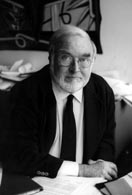
"Why is there something rather than nothing? The universe started out from the formless miasma of the Big Bang. And ever since then it's been governed by an inexorable tendency toward disorder, dissolution, and decay, as described by the second law of thermodynamics. Yet the universe has also managed to bring forth structure on every scale: galaxies, stars, planets, bacteria, plants, animals, and brains. How? Is the cosmic compulsion for disorder matched by an equally powerful compulsion for order, structure, and organization? And if so, how can both processes be going on at once?"
Waldrop, M. Mitchell. Complexity: The Emerging Science at the Edge of Order and Chaos
"What does a young researcher need at the beginning of a career? Perhaps, most of all, a good mentor. And freedom - freedom to experiment with ideas, freedom to try new directions, freedom to make mistakes, freedom to think without distraction."
-John Archibald Wheeler
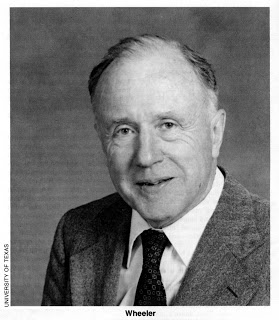
Leonardo: By the call to adventure, Da Vinci!
Da Vinci: Yes, Leonardo by the call to adventure that may consist in the urge for mastery of a symbolic domain. So, now there emerges the flow zone or the passion zone. Here, “peak performance meets peak engagement.” This is also called simply, “the zone,” as it is the one accessible by intense work. Here, happiness ensues as an outcome of the optimal experience. Paradoxically, however, by the very nature of flow, happiness can only exist in the past tense. For, in flow, the self sinks below the threshold of conscious awareness and therefore, is absent. The moment one “knows,” that is becomes conscious that one is happy, it disappears as the self emerges into conscious awareness. This is the zone all serious people who pursue symbolic domains live and work in. They are motivated by the sense of control in exercising their symbolic domains that naturally culminate in flow experiences. As you can see a small percentage of people belong to this category and make the pursuit not of happiness but of symbolic domains their overarching goal.
Leonardo: Ah, the vast majority of people pursue happiness and it forever eludes them. A small percentage of people don’t pursue happiness and it naturally ensues after each flow experience!
Da Vinci: Yes, Leonardo. And then there is another phase transition, the second order phase transition, to the next zone, the “higher purpose zone.” Here, to those endowed with a higher purpose, in a sense, the whole of life becomes a symbolic domain and all actions lead to the flow experience. And due to the extraordinarily high levels of challenges and skills, the flow experience acquires an almost universal character. Here, the distinction between happiness and unhappiness gets obliterated and fused into a transcendental state beyond happiness and unhappiness. As you see an extremely small percentage of people belong to this category and make the pursuit, again not of happiness but of vision and purpose their overarching goal.
Leonardo: Ah, going back to what I said a little earlier, I can summarise all three types of people like this: the vast majority of people pursue happiness and it forever eludes them. A small minority of people pursue not happiness but symbolic domains and happiness naturally ensues after each flow experience. And an even smaller minority of people pursue not happiness but vision and purpose and a state that transcends happiness becomes their natural and constant possession.
Da Vinci: It is no wonder, Leonardo that Viktor Frenkl writes, in his book, “Man’s Search for Meaning,”
“…success, like happiness cannot be pursued; It must ensue…as the unintended side-effect of one’s personal dedication to a course greater than oneself.”
Leonardo: Da Vinci, I cannot but help thinking about the people inhabiting the three zones. Why are the vast majority of people in the pain-pleasure zone, a small minority in the passion-flow zone and a rare few in the vision-purpose zone? What determines that people come to occupy these zones? Is it Nature or Nurture or perhaps privilege?
Da Vinci: Do you really want to know the reason Leonardo? It may be quite unsettling.
Leonardo: Of course, Da Vinci. Why should the vast majority of people deprived of the secret to happiness when the pathways to happiness or beyond are well known to humanity? Hey, wait a minute…I think it is becoming clear to me now…Da Vinci, did you not mention that the state beyond happiness is called the bliss state?
Da Vinci: Yes, Leonardo. It is best stated by Joseph Campbell in his profound and beautiful books, “The Power of Myth,” “The Hero With a Thousand Faces,” and “Pathways to Bliss.”
Leonardo: The Hero’s Journey? I do recall reading about it somewhere. Could you tell me more about it?
Da Vinci: According to Joseph Campbell, the hero is one who has found or done something beyond the normal range of achievement and experience. He or she is someone who has given his or her life to something much, much, much bigger than oneself.
Leonardo: How well this matches with what Viktor Frankl says that you just stated above!
Da Vinci: Yes, Leonardo, taking what Viktor Frankl says that happiness cannot be pursued but must ensue as a side-effect of one’s personal dedication to a cause greater than oneself, Joseph Campbell’s definition of the hero matches so perfectly. Yes, so it is only the hero who can reach a state beyond happiness, that is the state of bliss.
Leonardo: So, Da Vinci, returning to my question, why is it that the vast majority of people are deprived of the secret to happiness when the pathways to happiness or bliss is well known to humanity? All they need to do is to embark on the hero’s journey! Ah, is that so very difficult? Is that the privilege of the few?
Da Vinci: Leonardo, the hero’s journey is in fact the birthright of every individual but not of people!
Leonardo: What do you mean it is the birthright of every individual but not of people, Da Vinci? Do you mean to say that there is a difference between being an individual and being one among the people?
Da Vinci: Obviously, Leonardo. A human being is born an individual with unique endowments, qualities, traits, character, identity and is therefore an individual until that individual learns to conform to the social limitations though not norms and becomes one among the people.
Leonardo: What do you mean social limitations but not norms, Da Vinci?
Da Vinci: Well, Leonardo, the human being is a social being and benefits from being in a society. Without social structure, the individual is hopelessly lost and faces the task of reinventing the wheel. The social structure, however constraining it may be, provides order and complexity to the individual and makes it possible for the individual to absorb in a few years, the consolidated gains of humanity. The constraints placed by society are as necessary as that placed by a paradigm for a beginner in a domain. In fact, society also acts like a paradigm in that it is necessary for the individual to learn the rules of the game, in order to acquire meaning and purpose. Every individual, however, is also unique and must be able to preserve and express that uniqueness in society.
If this is nurtured by the society, the individual emerges as a blessing to the society. If it is restricted or subverted the individual can become either a dead load or a curse to society. As in the paradigm corresponding to a scientific symbolic domain, after the brief period of immersion of normal science, the practitioner must be able to rise to participate in revolutionary science. Otherwise, the paradigm itself stagnates and loses meaning and purpose.
So also, in a given society the individual must be able to learn the rules of the game and graduate to a level wherein it is possible to bring forth the uniqueness in ways and works beneficial to society and to the furtherance of its higher purpose. Otherwise, the society itself loses meaning and purpose and misses out in its march towards increasing ordered complexity. So, Leonardo, social limitations are a bane while social norms are a boon to the development of the individual.
Leonardo: You mean an individual who succumbs to social limitations loses uniqueness and becomes one among the people? While an individual who makes use of social norms positively, could possibly preserve the uniqueness and, therefore, remain an individual?
Da Vinci: That’s it, Leonardo.
Leonardo: So, the hero’s journey is the birthright of every individual but not of the people. In order to embark on the hero’s journey, which in fact every individual is capable of, one must remain an individual and not become one among the mass of people.
Da Vinci: Exactly, Leonardo! And to preserve one’s individuality is also a birthright of every individual. Except that certain elements of society like a rigid educational system, for example, endows individuals with learned weakness by an inhibited self-organization in the brain-mind.
Leonardo: Learned weakness, Da Vinci?
Da Vinci: Yes, Leonardo. I use the term learned weakness borrowing from Martin Seligman’s phrase, “Learned Helplessness.” As Martin Seligman introduced this prescient term into positive psychology, learned helplessness happens when individuals so use their powers and qualities against themselves that they become a source of debilitating weakness rather than a source of strength as it ought to be. As a result, individuals learn to become helpless. In a sense, they become experts in becoming helpless in the face of given challenges. No wonder as Thoreau says, the mass of human beings lead lives of quiet desperation.
Leonardo: And when that is taken to extreme case I suppose they develop phobias?
Da Vinci: Quite, Leonardo. However, phobics are those with a tremendous learning capacity but turned in the wrong direction. They learn extremely well to become helpless in the face of certain specific challenges.
Leonardo: Da Vinci, it is quite clear why the mass of people fall in the pain-pleasure zone and though pursuing happiness never attain it. But why do the small minority of individuals fall in the passion-flow zone and experience happiness at the end of the optimal experience when they could rise to the next zone, the vision-purpose zone and attain the bliss state?
Da Vinci: Leonardo, that’s one of the negative effects of the passion-flow zone itself. For, that zone could, in fact, become addictive and the individuals pursuing symbolic domains become so attached to their domains and activities that they are unwilling to look beyond. They remain trapped as prisoners of their respective symbolic domains. As Csikszentmihalyi Mihaly says,
“When a person becomes so dependent on the ability to control an enjoyable activity that he cannot pay attention to anything else, then he loses the ultimate control: the freedom to determine the content of consciousness. Thus enjoyable activities that produce flow have a potentially negative aspect: while they are capable of improving the quality of existence by creating order in the mind, they can become addictive, at which point the self becomes captive of a certain kind of order, and is then unwilling to cope with the ambiguities of life.”
Leonardo: So one can get trapped by the order itself?
Da Vinci: Yes, Leonardo. It is the case of the order possessing the individual rather than the individual possessing the order. This is also the reason why in certain meditative disciplines, the seeker is advised not to become attached to the sense of intoxicating peace accompanying the trance states. One must break through that barrier to move on to higher ranges of experience.
Leonardo: And having vision and purpose helps break through that barrier?
Da Vinci: Yes, vision and purpose being high in the hierarchy of invariant memories and representations, bring the propelling power to go beyond the passion-flow zone into the vision-purpose zone.
Leonardo: But that means, those who have reached the passion-flow zone also have a certain learned helplessness, in that they cannot go beyond the zone. And obviously, these individuals have escaped the learned helplessness of the first order. Do they then have a learned helplessness of the second order?
Da Vinci: You re right, Leonardo. A small minority of individuals do escape the effects of first order learned helplessness and make it to the passion-flow zone. But they don’t have the necessary energy to escape the effects of second order learned helplessness and breakthrough to the vision-purpose zone. And do you know the reason for that?
Leonardo: Do explain that, Da Vinci.
Da Vinci: Leonardo, I think this situation is best captured by a profound observation of Einstein. Let me quote his words and then go into it. In one of his addresses to a gathering of physicists, Einstein says,
“In the temple of science are many mansions, and various indeed are they that dwell therein and the motives that have led them thither. Many take to science out of a joyful sense of superior intellectual power; science is their own special sport to which they look for vivid experience and the satisfaction of ambition; many others are to be found in the temple who have offered the products of their brains on this altar for purely utilitarian purposes… For these people any sphere of human activity will do, if it comes to a point; whether they become engineers, officers, tradesmen, or scientists depends on circumstances.”
They escape first order learned helplessness because of their exceptional abilities and for the same reason pursue their symbolic domains due to the challenge it provides to match and exercise their skills. As Lee Smolin explains it more clearly,
“Master craftspeople and seers come to science for different reasons. Master craftspeople go into science because, for the most part, they have discovered in school that they’re good at it. They are usually the best students in their math and physics classes from junior high school all the way up to graduate school, where they finally meet their peers. They have always been able to solve math problems faster and more accurately than their classmates, so problem solving is what they tend to value in other scientists.”
So these small minority escape first order learned helplessness due to their skills and capabilities and because they are also the best students of the class, they are spared much of the gross negativities that ordinary students are subjected to by teachers and instructors.
Leonardo: And what about the rare few who escape second order learned helplessness and breakthrough to the vision-purpose zone?
Da Vinci: They are as Einstein says,
“Most of them are somewhat odd, uncommunicative, solitary fellows, really less like each other, in spite of these common characteristics, than the hosts of the rejected. What has brought them to the temple? That is a difficult question and no single answer will cover it. To begin with, I believe with Schopenhauer that one of the strongest motives that leads men to art and science is escape from everyday life with its painful crudity and hopeless dreariness, from the fetters of one's own ever shifting desires. A finely tempered nature longs to escape from personal life into the world of objective perception and thought; this desire may be compared with the townsman's irresistible longing to escape from his noisy, cramped surroundings into the silence of high mountains, where the eye ranges freely through the still, pure air and fondly traces out the restful contours apparently built for eternity…The state of mind which enables a man to do work of this kind is akin to that of the religious worshiper or the lover; the daily effort comes from no deliberate intention or program, but straight from the heart.”
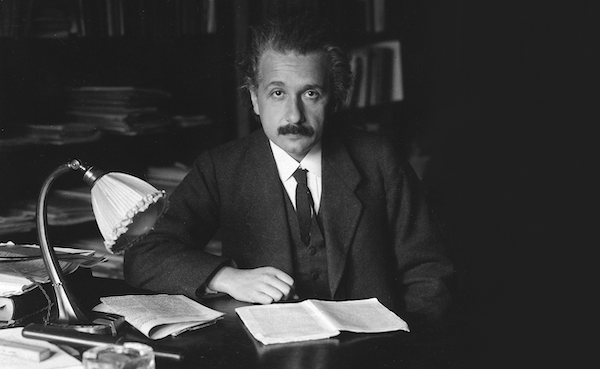
And again, As Lee Smolin explains it,
“Seers are very different. They are dreamers. They go into science because they have questions about the nature of existence that their schoolbooks don’t answer. If they weren’t scientists, they might be artists or writers or they might end up in divinity school…”
These rare few preserve their vision and purpose throughout their formal education, escape both first and second order learned helplessness and ultimately breakthrough to the vision-purpose zone.
Leonardo: But Da Vinci, these are generally not the best students in class. Especially as Einstein points out, many of these are odd, uncommunicative, solitary, hardly the ones to be given attention to by the teachers. Rather, they would be subjected to more severe negativity by the teachers than that faced by the ordinary students.
Da Vinci: Yes, Leonardo, no doubt about that. But remember, these rare few are also quite rebellious. They are stubborn and persistent in their questionings and being endowed with a strong sense of vision and purpose, are not easily discouraged. Often they pursue their learning outside and beyond the formal syllabus and curriculum. Einstein himself was an example of this type.
Leonardo: You are so right, Da Vinci. The great French mathematician Evariste Galois and the great Indian mathematician Srinivasa Ramanujan are yet other examples of such students.
Da Vinci: So, these rare few, escape both first order and second order learned helplessness and breakthrough to the vision-purpose zone. No wonder they are also the ones who embark on the hero’s journey, attain the bliss state beyond the state of happiness and reach the promised land.
Leonardo: So who then is responsible for allowing such a state of affairs, Da Vinci? Who is responsible for making sure that there is no learned helplessness of both orders?
Da Vinci: Leonardo, the answer may surprise you but it is the heros themselves.
Leonardo: What? The heros? How and why are the heros responsible for that? After all, it is with great effort that the heros have managed to embark on their journey and complete it.
Da Vinci: Ah, hold on there, Leonardo, hold on. Did you say complete it? Embark no doubt they did but did they complete it? I am afraid not all, in fact not most of them. Only the rarest of the rare few do complete the hero’s journey.
Leonardo: But after they…they embark on the hero’s journey…what do you mean they do not complete it?
Da Vinci: Leonardo, do you know what the last three stages of the hero’s journey consist of?
Leonardo: No, tell me, Da Vinci.
Da Vinci: The last three stages of the hero’s journey consists of what are known as the, “The Road Back,” “The Resurrection,” and “Return with the Elixir.” The hero after having obtained the bliss state or the stage of “The Reward,” has still three more stages to accomplish before completing the journey. The hero needs to turn back, reconnect and return to the ordinary world with the elixir or secret that can empower other individuals to embark on their own hero’s journey.
Only so does the hero complete the journey. Unfortunately, most heros stop short with attaining the reward and contented with personal fulfilment, are too wary to make the return back. Even so great a hero as the Buddha hesitated after attaining the supreme enlightenment. He felt it would be too great a labour to bring his teachings to the world that was steeped in ignorance and suffering and unwilling to embrace the teachings. And it was only when he realised that there were a few with undimmed eyes who would be lost if he did not teach them, did he turn back from leaving the phenomenal world and getting absorbed in the ultimate Nirvana.
And many a lesser hero has stopped short of completing the journey. Thus, the failure of the heros to return with the elixir is responsible for leaving the ordinary world to its learned helplessness. For, the resources that people in the ordinary world possess, who have never embarked on the hero’s journey could hardly be expected to impart an education that liberates, that enlightens and enriches, empowers and ennobles. Rather, they are responsible for all forms of learned weakness, of both the first and the second order.
Leonardo: I understand, Da Vinci. In a different context I recall what the great Indian spiritual teacher Sri Ramakrishna Paramahamsa said of those attaining the ultimate liberation. He said that most people, known as the jivakotis, who attain the ultimate trance of samadhi, the nirvikalpa samadhi, do not have the strength to return back to the world to teach and help others. Only the rare few, known as the isvarakotis, do have the strength to do so and they return with the higher knowledge to teach and help the others.
Da Vinci: That’s an apt illustration, Leonardo. In the field of science, many a great scientist could but do not reach out to teach the young not because they don’t want to but because though being great researchers, they are not necessarily great teachers. On the contrary, many of them are very poor teachers who are likely to make their students hate their subject than develop a liking for it. Max Plank, the great physicist who initiated the quantum revolution was one such. His lectures were supposed to be terribly boring.
Leonardo: Da Vinci, can we go into learned weakness in the context of education a little more?
Da Vinci: Leonardo, I would say in the context of education, students are left in a state worse than if they did not undergo the education. And learned weakness in education is a far more potent source of weakness. I spoke earlier of the human brain-mind possessing the meta faculty. By this very same faculty, students learn to not-learn, that is, they learn to stop learning. This is inhibited self-organization in the brain-mind.
Leonardo: Da Vinci, I think there are more factors at work that are responsible for learned weakness in education.
Da Vinci: There are several factors, Leonardo. One of the most powerful is the reward-punishment method. Another is rote-learning and its corresponding teaching. Yet another is unhealthy competition. All these may contribute to learned weakness by inhibiting self-organization in the brain-mind.
Leonardo: And students whose birthright it is to be heroes learn eventually to settle down to lead lives of quiet desperation!
Da Vinci: That, sadly, is the truth of the matter, Leonardo. The mass of students do lead lives of quiet desperation. They could, instead be leading lives of flaming inspiration.
Leonardo: How so, Da Vinci?
Da Vinci: By destroying inhibited self-organization and replacing it with stimulated self-organization, Leonardo.
Leonardo: Then, Da Vinci, it might be worth while to go a little more into inhibited self-organization?
Da Vinci: Of course, Leonardo. We will do that in order to provide the right context for stimulated self-organization.



